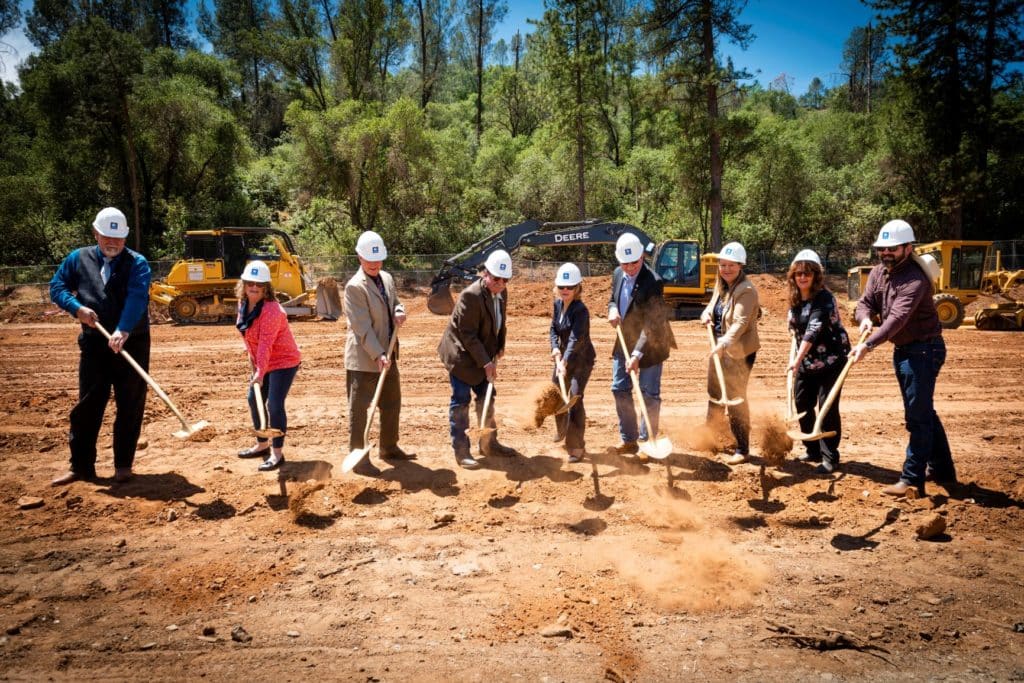Financing acquisitions can be challenging because of deadlines, unforeseen conditions, and the number of parties involved in a transaction. Even if your organization has done a land or property acquisition purchase in the past, your financing options can be confusing. This guide will help you decode some of the important elements of land and building acquisition loans.
Things to consider
Repayment Plan and Timing
A repayment plan is a narrative that lets your lender know how you plan to pay back your acquisition loan. This is an important document that your lender will use to the evaluate the likelihood of repayment and your capacity as a borrower. It’s also used to determine key parts of your loan like the term and if there will be any special structuring for principal repayment.
Your repayment plan should be clear about the development funding sources you plan to pursue, the timeline of your project, and alternative plans in case those funding sources are not available or if the development scope changes.
Your repayment plan should be comprehensive, describing the different types of approvals you’ll need to obtain for your planned development.
These may include approvals from funders (commercial and public agency); planning and zoning agencies; local government agencies; and homeowner groups. While most developers use aggressive scheduling, it’s important to maintain the realistic timeline that allows for occasional delays and setbacks.
Loan to Value Ratio (LTV)
Choosing an acquisition loan that best supports your mission involves more than comparing interest rates and closing fees. The LTV – the ratio of the loan amount to the property value – is an assessment of lending risk that lenders and financial institutions consider before approving a loan. Traditional banks generally have very low LTV’s for acquisition loans because banks are required to be very conservative about risk.
For example, commercial banks generally cannot provide land acquisition loans with more than a 50% LTV. Nonprofit affordable housing developers will often find greater flexibility with a CDFI lender. CDFI’s generally will allow and LTV of 85% to 90% for land loans.
If you’re purchasing an underperforming property or revitalizing a distressed building, the maximum 80% LTV that banks typically offer can present a significant obstacle. You, as the buyer, may need to invest 20 percent or more of the purchase price to close the transaction. An older or distressed property might need capital investment right away to address critical repairs or make improvements to improve occupancy. A 20% (or more) down payment reduces the lender’s risk, but a nonprofit organization may not have that much capital to contribute. Plus, investing cash in a property reduces the resources available for pursuing other opportunities related to your mission. Fortunately, it’s a barrier some lenders are willing to address.
For example, NeighborWorks Capital allows LTVs as high as 95% for operating property acquisitions. This means you need less cash to acquire the property and have more to invest in other mission activities. When comparing acquisition loan options consider the LTV in addition to the interest rate so you can evaluate the best investment for your money.

Loan Term
The time you’ll need to go from land purchase to starting construction will be influenced by many variables, some under your control and some outside of your control. It’s important that your acquisition financing is for a long enough term that you can hit all the milestones you need to reach before the loan matures. If your loan term is too short, you’ll have one more challenge – finding a new lender, or negotiating an extension – to deal with, a problem that can take priority over all others. When discussing a loan with a lender, you ask for a long-enough term to accommodate inevitable delays. This is especially important when your development needs to apply for and win an award of LIHTC or other public subsidies, which are almost always subject to competition and infrequent award timing. You may need to plan for 2 or 3 application rounds; make sure your lender understands these processes, and that they can provide you with the patience and flexibility that you need.
Current Zoning and Land Use Rights
When purchasing vacant or unimproved land, or a site where you’ll be demolishing unused structures, it’s vital to understand the zoning and land use rights of the property. T Almost every jurisdiction has some sort of zoning/ land use regulations. Some are broad, generally trying to separate incompatible uses (residential from industrial, e.g.); some are very narrow and specific, stating exactly what can be developed on a particular parcel. The specifics of the limits of what can be built on a property – maximum building height, minimum street setbacks, maximum density, parking requirements, etc. – impact the potential of your project. Understanding how your plans fit within the limits of the property you’re purchasing, is a key starting point.
Land use entitlements can, of course, be changed, but the process can be lengthy, costly, and uncertain. When talking with a lender, discuss any entitlement changes, variances, etc. that you will be pursuing, the process to get those approved, and the timeline for success.
Carrying Costs
One often under-considered element of a property acquisition, especially for unimproved land, is the carrying costs. These include not just the interest on the loan, but also the property taxes and insurance. Budgeting for these costs requires a realistic timeline for the holding period between purchase and closing your development financing, so there are not significant cost gaps early in your project.

Finding the Right Lender
Consider these factors as you decide which lender is the right choice for you and your project.
- Compare interest rates and payments. While interest rates don’t capture the full cost of your loan, they are a big part of it. Is the rate fixed or adjustable? If it’s adjustable, find out what index will be used to determine the new rate. Payments on acquisition loans are typically interest-only, with all principal due at maturity. Some longer-term loans require a bit of principal payment, later in the loan term. Some lenders will not offer interest-only- payments, requiring principal amortization.
- Establish timelines. Closing on time can make all the difference. Early in the application process, be sure to set timelines with your potential lender. Work with them only if you’re confident they will close when you need them to and on the loan terms you are expecting.
- Investigate closing fees and costs. Talk to lenders about the expected costs to underwrite and close the loan—origination fees, the costs of third-party reports, title and escrow charges, legal fees, etc. Most lenders won’t promise an exact figure, but they should be able to provide a good estimate.
- Ask about recourse and guarantees.
Acquisition loans are typically full recourse to the borrower and require a repayment guaranty from the developer. This is because the property value is based on future development potential, not on current performance. If the loan has a very low LTV or a short term because construction will start soon after acquisition, you may be able to negotiate a partial guaranty. - Find a lender who will support you.
Even if you’ve done this before, the process of application and underwriting can be confusing. It helps if you have a lending partner who is willing to answer your questions and walk you through the process to closing, as well as the ongoing reporting for the loan. Make sure the lender you choose is one you feel comfortable partnering with for the life of your loan.

What Your Lender Considers
Lenders underwrite acquisition loans by evaluating your strength as a sponsor. They consider:
- Your repayment plan and organizational capacity for repayment
- Your organization’s experience as a multifamily or single-family developer
- Your organization’s financial strength and capacity to navigate delays, changes in funding priorities and work with local communities to gain approvals for proposed developments
- Your history with your lender and other lenders
- For operating properties, the building’s condition and the amount of capital investment that is needed
- Environmental conditions of the land or building
If you’re acquiring a building, the historical and projected financial performance of the building is also considered.
Your lender will ask for any other information or documentation they need. Keep the lines of communication open and try to respond to any information requests as quickly as possible. This will help keep your loan application moving through the underwriting and approval process.
Preparing for Your Loan Application
One of the best ways to ensure that your loan request is processed quickly is to assemble as many of the documents and property information you can at the beginning of the process. These include:
- The purchase contract or purchase offer
- Your organization’s financial statements (the last three annual audited financials, plus your most recent quarter-end balance sheet and income statement)
- Existing loan information or use restrictions on the property, usually from a state or local government agency (like a housing finance agency)
- Estimates for the costs of planned rehabilitation or new construction
- Market analysis if the development will be new construction
- Appraisals, environmental reports, or surveys you may have for the property
Your lender should give you a list of all required documents, statements, reports, and property information. Not sure what you need? Just ask.
Partnering with NeighborWorks Capital
As you focus on your mission of providing affordable housing and supporting your community, NeighborWorks Capital can help you find the best financing for your next project.
We listen to understand your project needs and offer solutions that can help, often more flexible solutions that are outside the parameters prescribed by traditional lenders. We have a streamlined underwriting and approval process and can almost always close loans within 90 days of the first discussion, and much faster than that if needed. Our loan officers offer guidance and support throughout the loan application, underwriting, and closing process. If you have questions, reach out. We’re here to help.
Learn more about how NeighborWorks Capital supports members of the NeighborWorks network with competitively priced, fixed-rate financing. Visit our loan capital page for more information.














